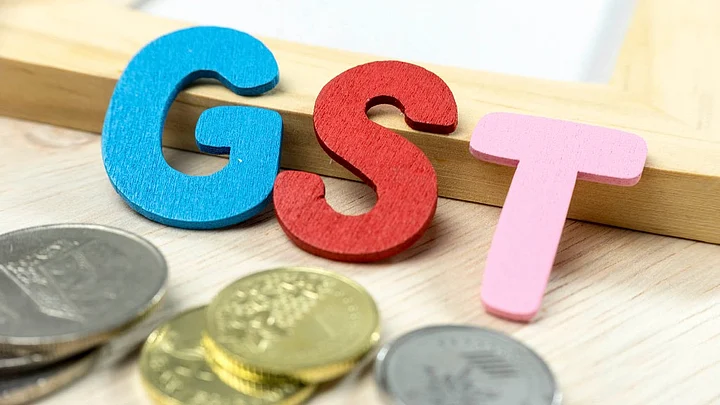The Haryana government has announced a plan to safeguard its revenue against fraudulent activities by taxpayers. It has laid down guidelines to determine when the input tax credit under Goods and Services Tax regime can be blocked for a taxpayer. Experts are divided over the implications and the ability of the state tax department to issue such a circular.
What’s The Plan of Action?
The plan of action was set into motion last week via a circular issued by the Excise and Tax Commissioner of Haryana. It says that a tax officer can use the GST Network portal to block and unblock input tax credit. Input tax credit means that a supplier can reduce the tax paid on inputs from tax payable on outward supplies. The state tax department will be able to block the input tax credit in the electronic cash ledger. The e-ledger on the GSTN reflects details such as amount of tax deposited, balance input tax credit and GST liability.
Input tax credit in this ledger can be partly or fully blocked if:
- An investigation reveals that a registered taxpayer is bogus or fake.
- The firm is found to be non-functional.
- Excess transitional credit has been claimed.
- Input tax credit has been availed for supplies not used in the course or furtherance of business. Credit has been availed for supplies that the law doesn’t allow for.
- Input tax credit has been claimed contrary to the GST provisions. For instance, if a supplier has paid the tax on supplies and the recipient doesn’t have the tax invoice.
Can Such a Circular Be Issued?
The optics of this move doesn’t look good but the department’s ability to bring such a circular cannot be challenged, for instance, via a writ petition, MS Mani, partner at Deloitte India, told BloombergQuint.
“If you’re not entitled to avail the credit, the department can always block it and that’s what they’ve said in the circular. In the situations they’ve mentioned, the taxpayer shouldn’t have taken the credit in the first place because he was never eligible for it.”MS Mani, Partner, Deloitte India
But AS Bisla, senior indirect tax advisor at industry body CII, disagreed. He pointed out that the circular itself doesn’t state under which provision of the GST law it's being issued.
“The law allows the government to raise a tax demand to protect revenue but it doesn’t allow them to block input tax credit.”But AS Bisla, Senior Advisor - Indirect Taxation, CII
Pratik Jain, head of indirect tax at PwC India, agreed. He said the law lays down a process where input tax credit is wrongly claimed. It entails issuance of a notice and investigation proceedings, before any amount can be recovered. "The circular bypasses all of this.”
As a first step, taxpayers will attempt to engage with the government or the GST Council to raise their concerns and a writ petition cannot be ruled out if the circular is used indiscriminately, Jain said.
And that’s the second issue, besides the department’s ability to notify this circular, that experts are divided on – the intent and implications of these guidelines.
Haryana’s Circular: Masterstroke or Harassment Tool?
Mani pointed out that the circular is a result of misuse of input tax credit by taxpayers. For instance, you have two group companies and you make one of them supply to the other. There are no real supplies and it’s just the invoices that are getting exchanged. And after some time, one company closes down and the other company has used the credit. The company that has used the credit says that it’s not at fault, he explained.
“Haryana seems to have come across such cases. And that’s what the tax department is trying to prevent. Since the data on GST paid and credit availed is now readily available on GSTN, the tax department needn’t go into a detailed investigation like it had to in the past; and the end of which companies would vanish.”MS Mani, Partner, Deloitte India
But Jain disagreed. He said that since most tax processes and forms have moved to GSTN, the avenues to harass taxpayers have reduced and industry fears that this circular gives the state tax department the ability to do that.
“This is because the guideline seems to be quite generic and the manner in which it is worded, it can potentially be used as a tool to harass the taxpayers. It says if input tax credit is wrongly claimed, they can block it. But the circular doesn’t say how will the tax authorities determine that. Equally, what is furtherance of business? That can be a subjective interpretation as well.”Pratik Jain, Partner & Head-Indirect Tax, PwC India.
The tax department can surely raise these questions during an audit or investigation but pending all that, if they're given the power to block credit, it could lead to large-scale disputes which can be avoided . The bigger worry is other states may issue similar circulars, he said.
Mani argued otherwise. If a genuine taxpayer is aggrieved and has been wrongly denied input tax credit, the remedy of a writ petition is available to them. And before that, such taxpayers can approach the jurisdictional commissioner with their concerns, he said.
“Normally, commissioners would get back to you within seven days. But if they don’t, the high court will give you relief,” Mani explained. “But fraudulent taxpayers – for whom the circular is intended – won’t dare to go before the commissioner or the high court. And that is what the tax department is playing on.”
(At The Quint, we question everything. Play an active role in shaping our journalism by becoming a member today.)
